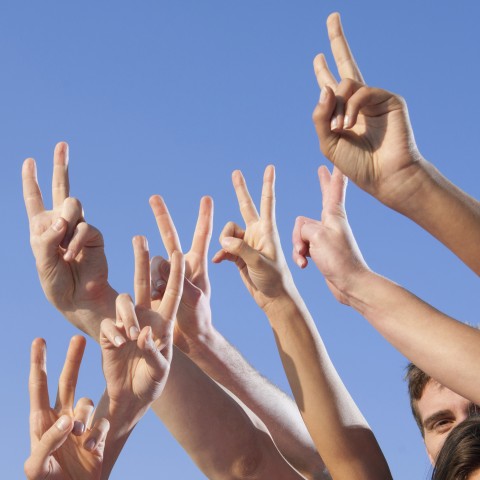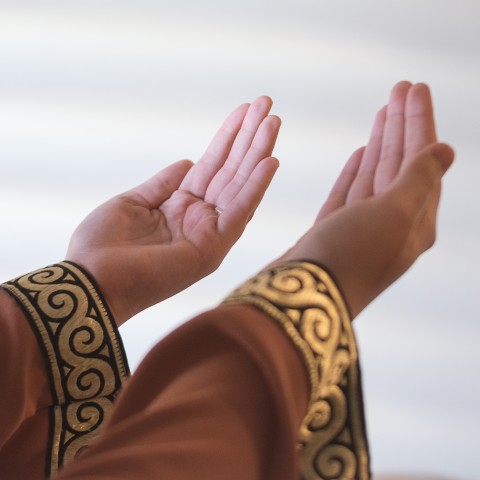
While body language is always a useful way of expressing or emphasizing our feelings, language learners can especially benefit from it! Imagine you’re in the country of your target language but lack the verbal communication skills necessary to get your point across. In this situation, it would be crucial to know the most common body and hand gestures in that country.
If you plan on visiting Turkey in the near future and don’t have enough time to learn the language, you should at least become familiar with the different Turkish gestures. Keep in mind, however, that you need to be very cautious about relying solely on gestures for communication. A positive gesture in your country could be a negative one in Turkey (or another country). Being mindful of what each gesture means and when it’s used will help you avoid many embarrassing situations!
In this article, we’ll talk about Turkish hand gestures and Turkish body gestures, so that you won’t have to feel helpless when you’re trying to communicate with a Turkish person who doesn’t speak your own language.
Before we start though, let me share with you an interesting and funny gesture I heard about many years ago. Every time I think of it, it cracks me up…
A tourist tried to explain something several times via gestures, but he finally felt so helpless that he showed his bottom, made a sound, and opened his arms to the sides as if asking where something was. Obviously, he was trying to ask where the restroom was! It sounds like a joke, doesn’t it? But it really happened!
 Table of Contents
Table of Contents
- Introduction to Turkish Communication
- Greetings
- Positive Gestures
- Negative Gestures
- Other Gestures
- Learn More About the Turkish Language and Culture with TurkishClass101
1. Introduction to Turkish Communication
Turkish people are known to be friendly and sincere. Perhaps this is why they don’t give others much personal space, especially when it comes to family members and close friends.
They also tend to be touchy. While in Turkey, you’ll often find women—or even men—walking arm in arm. It’s not uncommon to see men putting their arms around each other. It has nothing to do with sexuality; it’s just part of the culture.
Turkish people like chit-chatting and use a lot of gestures in the process, especially to emphasize their words, ideas, and feelings.
Now let’s see what kind of Turkish body language gestures are used in different situations.
2. Greetings
Offering a proper greeting is essential in making a great first impression. After learning how to say hello in Turkish, you should also become familiar with the following Turkish greeting gestures.
1. Waving your hand
This gesture is used in informal situations to say both “hello” and “goodbye” to someone while they’re at a distance.
2. Raising your hand and then putting it down
This one is used in both formal and informal cases. It’s used to say both “hello” and “goodbye” if there’s some distance between you and the person you’re greeting.

3. Bowing your head
When you bow your head, it can mean “Hello,” or “Nice to meet you, too.”
4. Shaking hands
This is done in formal settings. It’s the most common way of greeting someone you don’t know, someone you’ve just been introduced to, or someone with whom you have a business relationship.
5. Kissing two cheeks
This is a very common informal greeting. Friends, family members, and others who have a close relationship kiss each other on each cheek. Don’t be surprised if you also see men doing this. As mentioned earlier, this is just part of the culture and has nothing to do with one’s sexuality.
6. Putting your right hand on your heart
This is usually used by religious people who don’t want to shake hands with the opposite sex. It’s also used to say “Thank you,” or “I appreciate it.”
7. Opening your hands palms-up
This is an informal gesture. It’s a way of saying “What’s up?” to someone who is far from you.
8. Taking someone’s right hand in your right hand, kissing it, and taking it to your forehead
Depending on your cultural background, this one may be very unfamiliar to you. It’s done to show respect. Someone who is younger does this to someone who is older, regardless of the gender. It’s used when saying both “Hello,” and “Goodbye.”
3. Positive Gestures
Here are some Turkish hand gestures that have a positive connotation.
1. Thumbs-up
Like in most cultures, this means “good” or “I like it” in Turkish.

2. Holding your hand half up in the air, palm towards your face, fingers moving towards yourself
This is an informal gesture that means, “Come here.”
3. Closing your four fingers (except the index finger) and moving the tip of your index finger towards yourself
This one also means, “Come here.” It’s informal and normally used when someone is trying to go away or escape from you.
4. Shaking your head up and down
This is a sign of approval. It means “Yes,” or “I agree.” It’s typically used in informal situations, though it can also be used in formal situations.
5. Making a circle with your thumb and index finger while lifting the other fingers
This one means “Good,” or “I like it.”
6. Making a V sign with your index finger and middle finger
Like in most other cultures, this means “peace” in Turkish.

7. Raising your index finger or your hand
This is a way of asking for permission to speak. Usually, students use it in their classes to be given permission to talk by their teachers.
8. Putting your palm up and bringing your fingers in towards the thumb and moving it up and down
This is an informal gesture meaning “Good,” or “Delicious.”
9. Putting your index finger on your lips
This is an informal gesture meaning “Be quiet.”

10. Rubbing your index finger and thumb together
This gesture is used to say “money” or to ask “How much?” It’s used in informal situations.
4. Negative Gestures
Now, let’s look at the other side of the coin: negative Turkish hand gestures. (While we won’t be covering any truly insulting Turkish gestures here, you can become familiar with them in this YouTube video.)
1. Thumbs-down
It means “Not good,” or “I don’t like it.” It’s used in informal situations.

2. Twisting one hand up in the air as if changing a light bulb
It’s used to say “crazy” or to ask “Are you crazy?” It’s used among friends and in other informal situations.
3. Crossing your fingers
It means to get crossed with someone. This one is normally used by kids.
4. Shaking your head from one side to the other
This is a sign of disapproval, meaning “No,” or “I don’t agree.” It’s typically used in informal situations, though it can be used in more formal contexts as well.
5. Other Gestures
Let’s see some other Turkish gestures, what they mean, and when they’re used.
1. Raising and lowering your shoulders
It means: “I don’t care.” / “I don’t know.” / “I’m not sure.” It’s used in informal conversations.
2. Placing your hand in front of you, palm down, and tipping it from left to right several times
It means “so-so” or “more or less.”
3. Using your index finger to pull down the bottom lid of one eye
This means “I don’t believe you,” or “I highly doubt that.” It’s mainly used by kids.
4. Raising two hands together as you look towards the sky
This can either be a sign of praying or a way of saying, “Oh my God.”

5. Writing on air or writing on the palm of one hand with the other one
This gesture is used to ask for the bill in a restaurant. It’s used in informal settings.
- ➜ Click here to see a demonstration of some of the Turkish gestures explained above. The video also shows additional Turkish body language gestures you can learn!
6. Learn More About the Turkish Language and Culture with TurkishClass101
By now, you should know a lot more about Turkish body language gestures than you did before! Use them with peace of mind, knowing that native Turkish speakers will correctly understand what you mean.
Which of these body gestures were most fascinating to you? Are any of them similar to those in your country?
For more information on the Turkish language or culture, you should continue exploring TurkishClass101.com and start benefiting from our numerous audio recordings, vocabulary lists, blog posts, and free resources. And don’t forget about our MyTeacher service for Premium PLUS members, which allows you to study and practice with a personal tutor.
What are you waiting for? You can download the app for free and use our learning platform wherever you are.
Last but not least, please continue to provide us with feedback about all the resources provided at TurkishClass101.com.
Happy learning!










